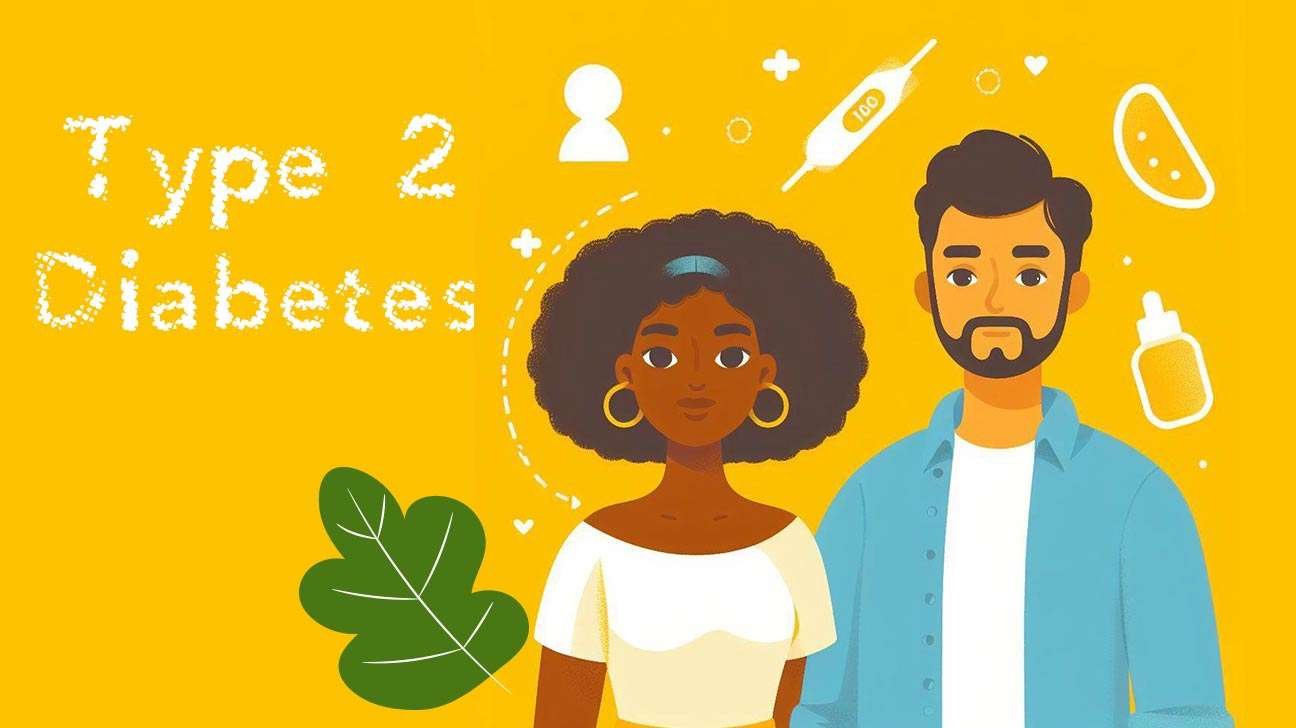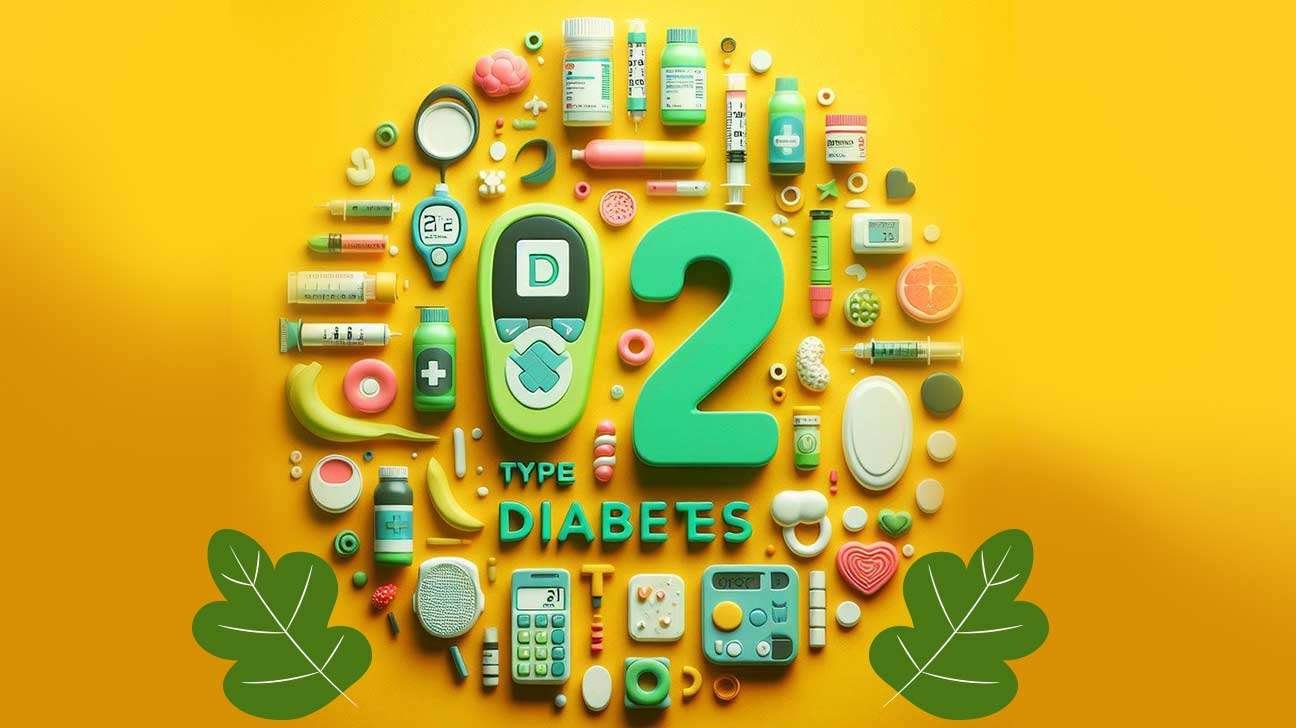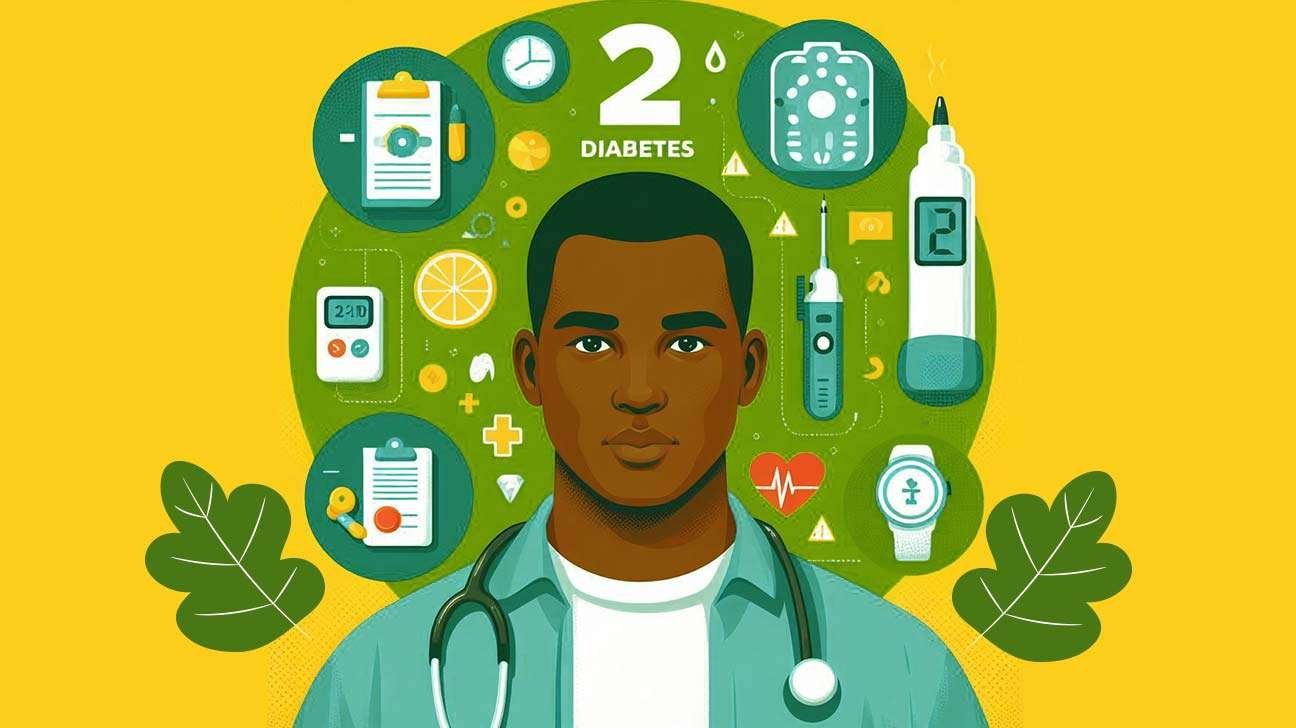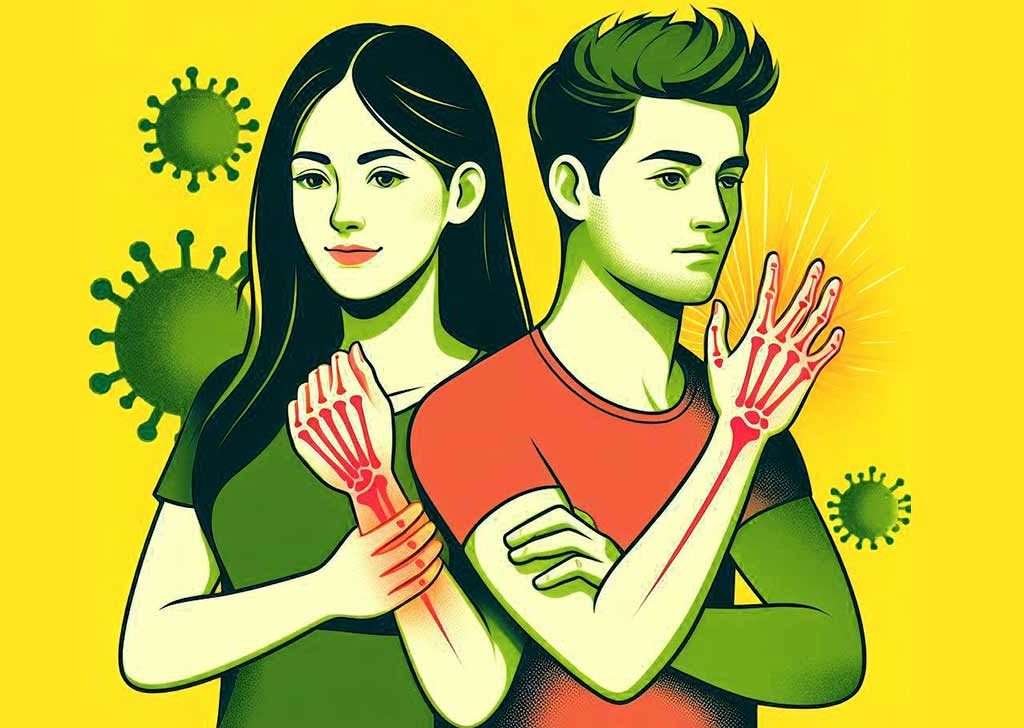Type 2 diabetes is a chronic condition that significantly impacts women’s health in various ways. This document explores the multifaceted effects of type 2 diabetes on women, incorporating personal stories and insights to illustrate the lived experiences of those affected. By adhering to the principles of Expertise, Authoritativeness, Accessibility, and Trustworthiness (EEAT), we aim to provide a comprehensive understanding of the challenges and considerations women face when managing this condition.
Type 2 diabetes occurs when the body becomes resistant to insulin or when the pancreas fails to produce enough insulin. This condition can lead to elevated blood sugar levels, which, if left unmanaged, can result in serious health complications. Women with type 2 diabetes may experience unique challenges due to hormonal fluctuations, reproductive health issues, and increased risks for certain conditions.
Type 2 Diabetes Affect Women’s Health
Hormonal Changes
Women experience hormonal changes throughout their lives, including menstruation, pregnancy, and menopause. These fluctuations can affect blood sugar levels and insulin sensitivity. For instance, some women report that their blood sugar levels fluctuate significantly during their menstrual cycle, making management more complex.
Reproductive Health
Women with type 2 diabetes may face reproductive health challenges, such as polycystic ovary syndrome (PCOS), which is more prevalent in those with insulin resistance. PCOS can lead to irregular menstrual cycles, fertility issues, and increased risk of endometrial cancer. Personal stories from women highlight the emotional toll of navigating these challenges while managing diabetes.
Mental Health
The psychological impact of living with type 2 diabetes can be profound. Women often report feelings of anxiety and depression related to their condition. One woman’s story reveals how the constant monitoring of blood sugar levels and dietary restrictions can lead to feelings of isolation and stress. Support from healthcare providers and peer groups can play a crucial role in managing these mental health challenges.
Cardiovascular Health
Women with type 2 diabetes are at a higher risk for cardiovascular diseases. This risk is compounded by factors such as obesity, high blood pressure, and high cholesterol, which are often associated with diabetes. Insights from healthcare professionals emphasize the importance of regular cardiovascular screenings and lifestyle modifications to mitigate these risks.
Personal Stories and Insights
Story 1: Navigating Pregnancy with Diabetes
One woman shared her experience of managing type 2 diabetes during pregnancy. She faced numerous challenges, including strict dietary guidelines and frequent medical appointments. However, she emphasized the importance of a supportive healthcare team and the joy of bringing a healthy baby into the world.
Story 2: The Emotional Journey
Another woman recounted her emotional journey with type 2 diabetes, discussing the stigma and misconceptions surrounding the condition. She found solace in connecting with others who shared similar experiences, highlighting the importance of community support in managing both the physical and emotional aspects of diabetes.
Type 2 diabetes presents unique challenges for women, affecting various aspects of their health and well-being. By sharing personal stories and insights, we can foster a greater understanding of these challenges and the importance of comprehensive care. Women living with type 2 diabetes deserve support, education, and resources to navigate their health journeys effectively. Through awareness and advocacy, we can empower women to take charge of their health and lead fulfilling lives despite the challenges posed by this condition.

Type 2 diabetes is a chronic condition characterized by elevated levels of blood sugar (glucose) due to insulin resistance or inadequate insulin production. Both men and women can develop type 2 diabetes, and the symptoms can be similar. However, some signs and symptoms may be more noticeable in women. It’s important to note that the presence of these symptoms does not necessarily mean a person has diabetes, and a healthcare professional should make a definitive diagnosis. Here are some signs of type 2 diabetes in women:
Type 2 Diabetes in Women
Frequent Urination (Polyuria):
Women with type 2 diabetes may experience an increase in the frequency of urination. This occurs because the kidneys try to eliminate excess glucose from the bloodstream by excreting it in the urine.
Excessive Thirst (Polydipsia):
Increased urination can lead to dehydration, prompting a feeling of excessive thirst in an attempt to compensate for fluid loss.
Unexplained Weight Loss or Gain:
While some women with type 2 diabetes may experience weight loss due to the body breaking down muscle and fat for energy, others may gain weight due to insulin resistance.
Fatigue:
The body’s inability to effectively use glucose for energy can lead to persistent fatigue and weakness.
Blurred Vision:
High levels of glucose in the blood can affect the fluid balance in the eyes, leading to changes in vision. Blurred vision can be an early sign of diabetes.
Yeast Infections:
Women with diabetes may be more susceptible to yeast infections, particularly in the genital area. Elevated glucose levels can create an environment conducive to the growth of yeast.
Slow Healing of Wounds:
Diabetes can impair the body’s ability to heal, and wounds, cuts, or infections may take longer to heal in individuals with uncontrolled diabetes.
Changes in Menstrual Cycle:
Some women may experience irregularities in their menstrual cycle, including changes in frequency, duration, or intensity.
Polycystic Ovary Syndrome (PCOS):
Women with type 2 diabetes may have a higher risk of developing PCOS, a hormonal disorder that can cause irregular periods, acne, and enlarged ovaries with small cysts.
Darkened Skin Patches (Acanthosis Nigricans):
Insulin resistance can lead to the development of dark, velvety patches of skin, usually in the neck, armpits, or groin area.
It’s crucial for individuals, especially those with risk factors such as a family history of diabetes, obesity, or sedentary lifestyle, to be aware of these signs. If any of these symptoms are present, it’s essential to consult with a healthcare professional for proper evaluation, diagnosis, and management. Early detection and intervention are key in effectively managing type 2 diabetes and preventing complications.
Symptoms of Type 2 Diabetes
Type 2 diabetes is a chronic condition characterized by high levels of blood sugar (glucose) resulting from the body’s inability to effectively use insulin. Insulin is a hormone that helps cells absorb glucose for energy. Here are common symptoms of type 2 diabetes:
Increased Thirst (Polydipsia):
People with type 2 diabetes may experience excessive thirst, leading to increased water consumption.
Frequent Urination (Polyuria):
High blood sugar levels can cause the kidneys to work harder to filter and absorb excess glucose, leading to increased urine production.
Unexplained Weight Loss:
Despite eating more than usual, individuals with type 2 diabetes may lose weight. This can occur due to the body breaking down muscle and fat for energy when cells are not receiving enough glucose.
Increased Hunger (Polyphagia):
Insulin resistance can prevent glucose from entering cells, leading to a feeling of hunger, even after eating.
Fatigue:
The body’s inability to effectively use glucose for energy can result in persistent fatigue and a lack of energy.
Blurred Vision:
High blood sugar levels can affect the fluid levels in the eyes, leading to blurred vision.
Slow Wound Healing:
Diabetes can impair the body’s ability to heal, causing cuts and bruises to take longer to recover.
Frequent Infections:
High blood sugar levels can weaken the immune system, making individuals with type 2 diabetes more susceptible to infections.
Tingling or Numbness in Extremities:
Diabetes can damage nerves over time, leading to tingling or numbness, particularly in the hands and feet.
Dark Skin Patches:
A condition called acanthosis nigricans may occur, characterized by dark, velvety patches of skin, often seen in the neck, armpit, or groin area.
It’s important to note that individuals may experience varying degrees of these symptoms, and some may not exhibit noticeable symptoms at all. Regular health check-ups and monitoring of blood sugar levels are crucial for the early detection and management of type 2 diabetes. If you suspect you may have diabetes or are experiencing symptoms, it is essential to consult a healthcare professional for proper diagnosis and guidance.

Type 2 Diabetes Treatment
The management and treatment of type 2 diabetes typically involve lifestyle modifications, medications, and sometimes insulin therapy. Here are common approaches to treating type 2 diabetes:
Lifestyle Changes:
- Diet: Adopting a healthy, balanced diet with an emphasis on whole foods, fruits, vegetables, and whole grains. Monitoring carbohydrate intake and managing portion sizes is crucial.
- Regular Exercise: Engaging in regular physical activity helps improve insulin sensitivity and can assist in maintaining a healthy weight. Aim for at least 150 minutes of moderate-intensity aerobic exercise per week.
- Weight Management: Losing excess weight, if overweight, can significantly improve insulin sensitivity and blood sugar control.
Oral Medications:
- Metformin: This is usually the first-line medication for type 2 diabetes. It helps the body use insulin more effectively and reduces glucose production by the liver.
- Sulfonylureas, Meglitinides, and DPP-4 Inhibitors: These medications stimulate insulin release or reduce glucose production to help lower blood sugar levels.
Injectable Medications:
- GLP-1 Receptor Agonists: These medications stimulate the release of insulin, slow down stomach emptying, and reduce appetite. They are often used in combination with other medications.
- Insulin: In some cases, especially as the disease progresses, insulin therapy may be necessary. Different types of insulin, such as long-acting and short-acting, may be prescribed.
Monitoring Blood Sugar Levels:
Regular monitoring of blood glucose levels is essential for managing diabetes. This may involve self-monitoring with a glucose meter to check levels at home.
Regular Medical Check-ups:
Regular visits to healthcare providers for monitoring and adjustments to the treatment plan are crucial for effective diabetes management.
Education and Support:
Diabetes education programs help individuals understand the condition, its management, and lifestyle changes. Support from healthcare professionals, dietitians, and diabetes educators can be valuable.
It’s important to note that the treatment plan for type 2 diabetes is individualized, and the approach may vary based on factors such as age, overall health, and the presence of other medical conditions. Close collaboration with healthcare providers is essential to tailor the treatment plan to the specific needs of each person with type 2 diabetes. Lifestyle changes, including a healthy diet and regular exercise, often play a central role in managing the condition.

Difference Between Type 1 and Type 2 Diabetes
Type 1 diabetes and type 2 diabetes are both chronic conditions that affect the way the body regulates blood sugar (glucose). However, they differ in their causes, onset, and treatment. Here are key distinctions between type 1 and type 2 diabetes:
Causes:
- Type 1 Diabetes: It is an autoimmune condition where the immune system mistakenly attacks and destroys the insulin-producing beta cells in the pancreas. The exact cause is not known, but genetic and environmental factors may play a role.
- Type 2 Diabetes: It often develops due to insulin resistance, where the body’s cells do not respond properly to insulin, and the pancreas cannot produce enough insulin to compensate. Genetics and lifestyle factors, such as obesity and lack of physical activity, contribute to the development of type 2 diabetes.
Onset:
- Type 1 : It is usually diagnosed in childhood or adolescence, although it can occur at any age.
- Type 2 : It typically develops in adults, but it is becoming more common in younger individuals, including children and adolescents, due to rising rates of obesity.
Insulin Production:
- Type 1 : Individuals with type 1 diabetes produce little to no insulin, requiring lifelong insulin therapy.
- Type 2 : Initially, the pancreas produces insulin, but the body’s cells become resistant to its effects over time. As the disease progresses, insulin production may decrease, and some individuals may require insulin or other medications.
Treatment:
Type 1 : Treatment involves insulin therapy delivered through injections or an insulin pump. There is no cure for type 1 diabetes, and lifelong insulin replacement is necessary.
Type 2 : Treatment may involve lifestyle modifications, oral medications to improve insulin sensitivity, and, in some cases, insulin therapy. Lifestyle changes, such as a healthy diet and regular exercise, are often crucial in managing type 2 diabetes.
Risk Factors:
- Type 1 Diabetes: Family history and genetic factors are significant risk factors, and it is not directly linked to lifestyle or obesity.
- Type 2: Risk factors include family history, genetics, obesity, sedentary lifestyle, age, and certain ethnicities (e.g., African American, Hispanic, Native American).
Symptoms:
- Type 1 Diabetes: Symptoms may develop rapidly and include increased thirst, frequent urination, unexplained weight loss, fatigue, and blurred vision.
- Type 2: Symptoms may be gradual and include increased thirst, frequent urination, unexplained weight loss, fatigue, blurred vision, and slow wound healing.
Understanding these differences is crucial for proper diagnosis and management of diabetes. If someone experiences symptoms associated with diabetes, they should consult a healthcare professional for evaluation and appropriate care.
Type 2 Diabetes: Everything Every Woman Should Know
Type 2 diabetes is a chronic condition that affects the way your body metabolizes glucose (sugar), leading to elevated blood sugar levels. While it impacts millions of people worldwide, women face unique challenges and complications when managing the disease. This guide will explore all aspects of type 2 diabetes that every woman should know, from symptoms and risk factors to management, prevention, and the effect on pregnancy and overall health.
1. What Is Type 2 Diabetes?
- Definition: Type 2 diabetes occurs when the body becomes resistant to insulin or the pancreas fails to produce enough insulin. Insulin is a hormone that helps sugar (glucose) enter cells to be used for energy.
- How It Works: In type 2 diabetes, glucose builds up in the blood instead of being absorbed by cells, leading to elevated blood sugar levels (hyperglycemia).
2. Symptoms of Type 2 Diabetes in Women
- Common Symptoms:
- Frequent urination
- Increased thirst
- Unexplained weight loss
- Fatigue
- Blurred vision
- Slow healing of wounds
- Frequent infections
- Specific Symptoms in Women:
- Urinary Tract Infections (UTIs): Women with type 2 diabetes are more prone to UTIs due to high blood sugar, which fosters bacterial growth.
- Yeast Infections: High glucose levels can also increase the risk of fungal infections like candidiasis.
- Polycystic Ovary Syndrome (PCOS): Women with PCOS have a higher risk of developing insulin resistance and type 2 diabetes.
- Sexual Health Issues: Diabetes can affect sexual health, causing issues like vaginal dryness, painful intercourse, and reduced sexual desire.
3. Risk Factors for Women
- Genetic Factors: A family history of diabetes increases your risk.
- Obesity: Being overweight is a major risk factor. Excess fat, especially around the abdomen, increases insulin resistance.
- Age: Women over 45 are at higher risk, though younger women are increasingly being diagnosed due to lifestyle factors.
- Gestational Diabetes: Women who develop diabetes during pregnancy have a higher chance of developing type 2 diabetes later in life.
- Hormonal Changes: Menopause and hormonal changes can increase insulin resistance.
- Ethnicity: African American, Hispanic, Native American, and Asian women are at greater risk.
4. Hormonal Effects and Diabetes
- Menstrual Cycle: Blood sugar levels can fluctuate during the menstrual cycle, particularly during the luteal phase (after ovulation). Women may experience higher blood glucose levels just before their period.
- Menopause: The hormonal changes during menopause can make blood sugar levels harder to control. Reduced estrogen levels can increase insulin resistance, while menopause symptoms like night sweats and poor sleep can interfere with diabetes management.
- PCOS: Women with PCOS are at a higher risk of developing insulin resistance and type 2 diabetes.
5. Pregnancy and Type 2 Diabetes
- Gestational Diabetes: Women who develop gestational diabetes are at a higher risk of developing type 2 diabetes later in life. Managing blood sugar levels during pregnancy is crucial to ensure both maternal and fetal health.
- Pregnancy Complications: Uncontrolled diabetes during pregnancy can lead to complications such as preeclampsia, premature birth, and delivery complications.
- Impact on the Baby: Babies born to mothers with uncontrolled diabetes are at risk of being large for their gestational age (macrosomia), which can complicate delivery. These babies may also be at higher risk of developing obesity and type 2 diabetes later in life.
6. Complications of Type 2 Diabetes in Women
- Heart Disease: Women with diabetes are at a higher risk of developing cardiovascular diseases than men. This includes conditions like heart attacks and strokes.
- Kidney Disease: Diabetes can damage the kidneys over time, leading to chronic kidney disease or kidney failure (diabetic nephropathy).
- Nerve Damage (Neuropathy): High blood sugar can damage the nerves, leading to pain, tingling, or numbness, particularly in the feet and hands.
- Eye Problems: Diabetic retinopathy is a condition where high blood sugar damages the blood vessels in the retina, potentially leading to blindness.
- Foot Problems: Poor circulation and nerve damage can lead to foot ulcers, infections, and even amputations.
- Mental Health Issues: Women with diabetes are more likely to experience depression, anxiety, and eating disorders. Managing diabetes and emotional well-being is important for overall health.
7. Management of Type 2 Diabetes in Women
- Dietary Changes:
- Balanced Diet: Focus on a diet rich in whole grains, lean proteins, healthy fats, and plenty of fruits and vegetables. Avoid refined sugars and processed foods.
- Carbohydrate Counting: Carbohydrates have the most significant impact on blood sugar. Learning to count carbs and balancing intake can help manage blood sugar levels.
- Glycemic Index: Choose foods with a low glycemic index (GI) to prevent spikes in blood sugar.
- Physical Activity:
- Regular exercise helps the body use insulin more efficiently and lowers blood sugar levels. Aim for at least 150 minutes of moderate-intensity exercise per week, such as brisk walking, cycling, or swimming.
- Weight Management: Maintaining a healthy weight can reduce insulin resistance.
- Medications:
- Metformin: A common medication that helps lower blood sugar by reducing glucose production in the liver and improving insulin sensitivity.
- Insulin Therapy: Some women with type 2 diabetes may require insulin injections if other medications are not sufficient.
- Other Medications: There are other drugs available, such as GLP-1 receptor agonists and SGLT2 inhibitors, that help lower blood sugar levels.
- Monitoring Blood Sugar: Regular monitoring of blood glucose levels is essential to manage diabetes effectively.
8. Preventing Type 2 Diabetes
- Healthy Diet: Eat a balanced diet rich in whole foods, including fruits, vegetables, lean proteins, and whole grains.
- Regular Exercise: Engage in regular physical activity to maintain a healthy weight and reduce insulin resistance.
- Weight Loss: Losing even a small percentage of body weight can reduce the risk of developing type 2 diabetes.
- Quit Smoking: Smoking increases the risk of type 2 diabetes and its complications.
- Manage Stress: Chronic stress can increase blood sugar levels. Techniques such as meditation, yoga, and mindfulness can help manage stress.
- Regular Health Check-ups: Regular screenings for blood sugar levels, especially for women at high risk, are important for early detection and prevention.
9. Living with Type 2 Diabetes
- Emotional Support: Living with diabetes can be challenging, but emotional support from family, friends, or support groups can make it easier to cope.
- Self-Care: Regular self-care routines, including foot care, oral hygiene, and mental health practices, are crucial for managing diabetes.
- Education: Staying informed about diabetes management can empower women to take control of their health.
10. Conclusion
Type 2 diabetes is a manageable condition, but it requires constant attention and care, especially for women who face unique challenges. Understanding the risks, symptoms, and management strategies is essential for living a healthy life. By making informed lifestyle changes, taking medications as needed, and regularly monitoring health, women can manage their diabetes effectively and reduce the risk of complications.



